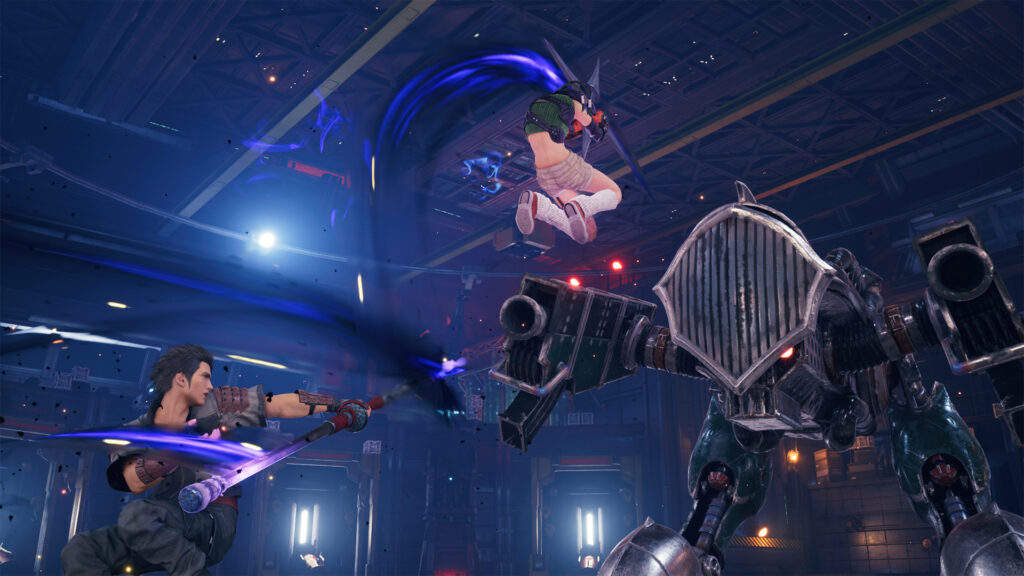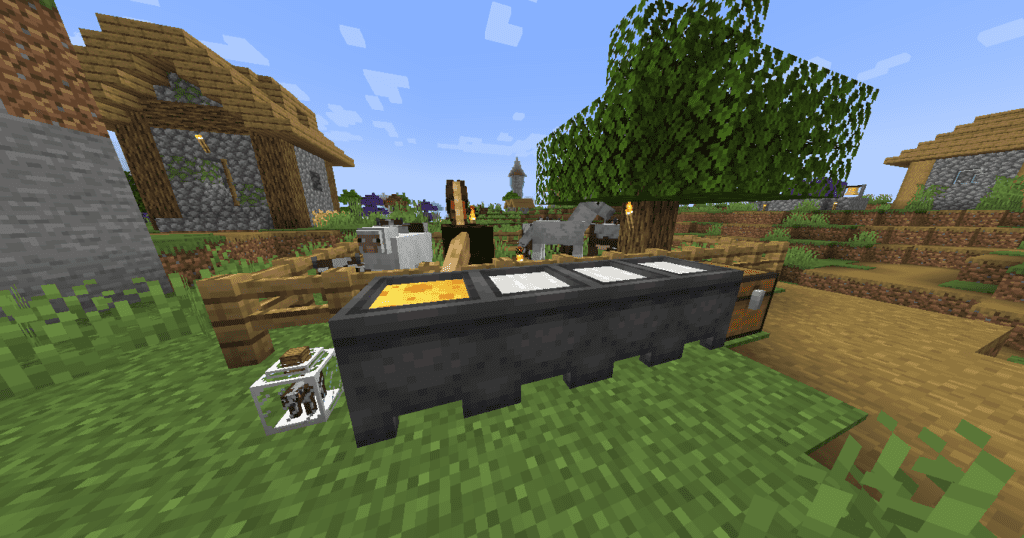The gaming industry is a wide-reaching behemoth, constantly shifting and evolving at a breakneck pace. It’s an entity that, much like New York City, never seems to sleep, churning out innovations, trends, and experiences one after another.
Keeping up with everything happening in the industry is like trying to outrun a Formula 1 car while on a broken unicycle – an utterly hopeless situation. But fear not! This article will show you 7 modern trends in the gaming industry and how they are shaping the future of interactive entertainment.
Put down your controller and let’s get started!
7 modern trends in the gaming industry to be on the lookout for
Augmented Reality (AR) and Virtual Reality (VR) games
Do you remember Pokémon Go, one of the most popular mobile games of all time? People were scurrying around everywhere with their phones in hand to capture those pocket monsters and gather loot from pokéstops.
It was such a worldwide phenomenon we could argue it was the closest we ever got to world peace.
Well, that game was a taste of Augmented Reality, or AR, where digital elements overlay our physical world. Think of dragons soaring through your living room or treasure hunts across a traditional park in your city – AR blends everyday life with gameplay elements.
Virtual Reality, or VR, on the other hand, is all about complete immersion. Put on a headset, get some motion trackers, and you’re transported to entirely new worlds. While realistic haptic feedback technology is far from being a reality, VR’s immersion levels are damn impressive – it really feels like we’re in another world.
As it stands, both AR and VR are evolving rapidly. AR applications are popping up everywhere, from furniture visualization apps to educational experiences that bring chemistry concepts and history to life right before your eyes. Meanwhile, VR headsets are becoming lighter, cheaper, more powerful, and less “laggy,” making them much more comfortable to use for extended periods.
Fitness gaming
Gamers often get a bad rap for being couch potatoes, but what if games could incentivize us to be more active? That’s where fitness gaming, powered by AR and the Internet of Things, or IoT, comes in.
Imagine playing a virtual game where you explore real-world locations, go for a morning run on a treadmill with IoT-powered elements, or do some workout while fighting against Mike Tyson. Your movements in the real world control your avatar in the game, which can be further modified by your heart rate and other data, making exercise fun and engaging.
Some of these devices include smartwatches, fitness trackers, and other assorted gadgets you carry everywhere that could become vital parts of the gameplay – and the good thing is that they already exist! They just lack proper integration for games on consoles, phones, and other platforms.
All in all, this isn’t just about chasing trends, it’s about addressing a pressing problem. Millions of gamers lead sedentary lifestyles and combining physical exertion with a fun activity (in this case, gaming) could offer a unique way to make workouts more accessible and appealing.
Retro gaming and remakes/remasters
Remember those VHS tapes? The feeling of carefully rewinding everything with a pen? Do you feel somewhat nostalgic when thinking about it?
Yeah, nostalgia is a very, very powerful feeling, and it’s having a huge impact on the entertainment world. We’re seeing a surge in retro gaming, where the pixelated heroes and iconic soundtracks of decades past are back in the spotlight.
To be fair, some games never really left it – like the eternal battle between Mario and Bowser – but that’s the gist of it.
But what’s up with the retro revival? Like we’re seeing with Disney’s live-action remakes, there’s a certain comfort in revisiting familiar worlds and characters – and they know it. They evoke a sense of childhood wonder, simpler times, and memories of joyful button-mashing sessions.

Similarly, we’re seeing the rise of remakes and remasters fueling this trend. These modernized versions of classic games breathe new life into the originals, offering crisp visuals, smoother gameplay, and sometimes even expanded storylines and deeper game mechanics for players to explore.
From Final Fantasy VII’s remake to Shadow of the Colossus for PS5, their updated experiences allow a new generation to discover the gems of gaming’s past while providing veterans with a chance to revisit them with fresh eyes.
Cloud gaming is on the rise
Gaming as a hobby can get pretty expensive. Every now and then, you’re required to exchange your components for better ones, which be a troublesome and costly affair. And those are expenses added on top of the cost of those games – recent AAA games are going for upwards of $60 nowadays, and the situation in poorer countries is even direr.
Now imagine if you could only access any game, anytime, and anywhere without having to rely on a fancy console or a beefy computer. That’s the promise of cloud gaming (or “Gaming as a Service”), and it’s slowly changing the industry’s landscape. You can think of them as the Netflix of video games – you subscribe, pick your title, and voilà, instant gaming!
Platforms like Microsoft’s xCloud, Sony’s PlayStation Now, and Nvidia’s GeForce Now allow you to stream games directly over the internet, fully eliminating the need for expensive hardware.
While platforms like Stadia, launched with much fanfare, eventually shut down, others continue to gain traction, offering accessibility, affordability, and flexibility for many gamers worldwide. You can play cutting-edge titles on your phone, tablet, or even a smart TV, opening up the world of gaming to a wider audience and potentially democratizing the industry like never before.
However, challenges remain: reliable internet speeds and data caps are massive hurdles for some, and latency issues can disrupt the smooth flow of gameplay (particularly in fast-paced multiplayer games). Additionally, the availability of specific games can vary across platforms, and the lack of ownership may deter some players.
Despite those challenges, cloud gaming holds immense potential – keep your eyes peeled for news on this trend!
The metaverse, Web3, and blockchains
Remember the dystopian metaverse from Snow Crash? Well, forget that. The real deal has the potential to be so much more! Picture it as a giant, interconnected network of virtual spaces where you can hang out, play games, build things, collaborate on projects, and even own digital assets.
In the future, the metaverse won’t be controlled by a single company or government. Instead, it will be powered by Web3 principles, one of which is decentralization. In other words, users will have more agency, contributing to a collaborative and user-driven virtual environment where creativity knows no limits.

NPCs, dialogues, and more powered by artificial intelligence (AI)
AI is no longer science fiction, it’s changing the game (and the gaming industry as well). It’s currently one of the hottest buzzwords on the block, and the rate of progress is nothing short of impressive. In fact, AI might be moving forward too fast for most people to adapt, causing some people to ask for a halt to the pace of progress.
Platforms like OpenAI’s ChatGPT, Microsoft’s Dall-E 3, Anthropic’s Claude, Google’s Bard (that is now powered by Gemini), and Midjourney showcase generative AI’s incredible potential, and it won’t be long until we see their creations in our games.
Say goodbye to robotic NPCs delivering stilted dialogue: AI-generated dialogue and voice synthesis will breathe new life into these digital companions, making their conversations as natural and engaging as real-life interactions.
Additionally, generative AI should soon be able to create unique content like stories, music, items, and even music completely on the fly. This means many games could become infinitely replayable, with the AI crafting fresh experiences every time you press start.
By the way, AI-powered ray tracing, also known as “ray reconstruction,” is on the horizon – and it’s showing promising results. This new technology could make the stunningly realistic lighting effects currently reserved for high-end hardware accessible to everyone, making gameplay environments even more immersive and realistic.
Creative and collaborative games
A trend championed by games like Roblox and Minecraft, it is all about collaboration, creativity, and endless possibilities – and it’s something that shows no signs of slowing down. These titles are more than just games: they’re virtual playpens overflowing with potential.
In Minecraft, vast landscapes stretch before you, begging to be molded into something unique. Be it a sprawling modern city, an old historical village, a fully automatic house, or even a cyberpunk megalopolis like Akira’s Neo Tokyo, a creative mind, and perhaps some friends are all it takes for this game to feel infinite in replayability.
And if vanilla ever gets boring, you can add mods to spice up the gameplay.
As for Roblox, it takes things a step further, offering a platform for aspiring game developers to build their worlds within the world. Imagine programming your minigames in Lua, obstacle courses, and even entire universes, and then inviting others to explore, play, and contribute with their creative spark.
By the way, Minecraft and Roblox are considered a rudimentary form of the metaverse – access to many of their worlds is just some clicks away.

This trend is not all about building, though; it’s about fostering connections with other people, unleashing the creative juices, and learning through play. In some games, collaboration becomes a necessity, teaching players how to communicate, solve problems, and work as a team.
And the beauty of these open-ended platforms is that the gift just keeps on giving. New updates, community-curated content, and the sheer limitlessness of your imagination ensure that the adventure only ends when you call it quits.
Conclusion
And there you have it! Throughout this article, we have explored seven trends that are rewriting the rules of gaming, paving the way for an even more immersive, engaging, and accessible experience.
From the immersive wonders of AR and VR to the nostalgia-fueled resurgence of retro gaming and remakes, the landscape is quickly changing. Fitness gaming is soon due to breaking the stereotype of the sedentary, slob gamer, and cloud gaming is opening the doors to a world where accessibility and on-demand gaming are key.
The metaverse, Web3, and blockchains are redefining how we interact within virtual spaces, promising a decentralized and interconnected gaming future where players can earn money and virtual goods by playing. AI is no longer just a concept, it’s actively transforming NPCs and dialogues, as well as speeding up development everywhere across the board.
Last, but not least, creative and collaborative games showcase the power of imagination, allowing players to not just play but actively shape the virtual worlds they inhabit. It’s also a canvas for their creative juices and collaboration with other gamers!
Develop your games with Main Leaf
Looking for a game development partner that’s not just keeping up but also setting the pace? At Main Leaf, our squad of 70+ experts are the go-to professionals for cutting-edge gaming experiences.
From consoles and PCs to mobile gaming experiences, we’ve got you covered! Our expertise with Unity and Unreal Engine, as well as technologies like AI and blockchains, will leave you more than satisfied.
Are you ready to take your gaming experiences to the next level? Shoot us a message below to get started with Main Leaf’s development services!

